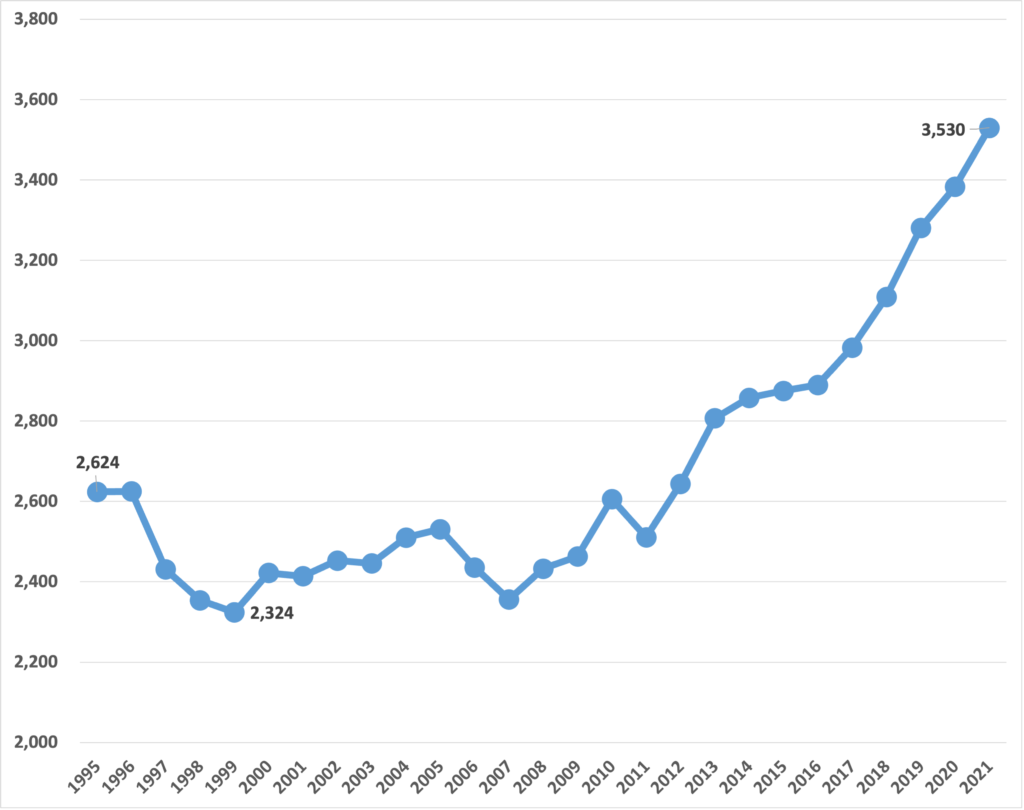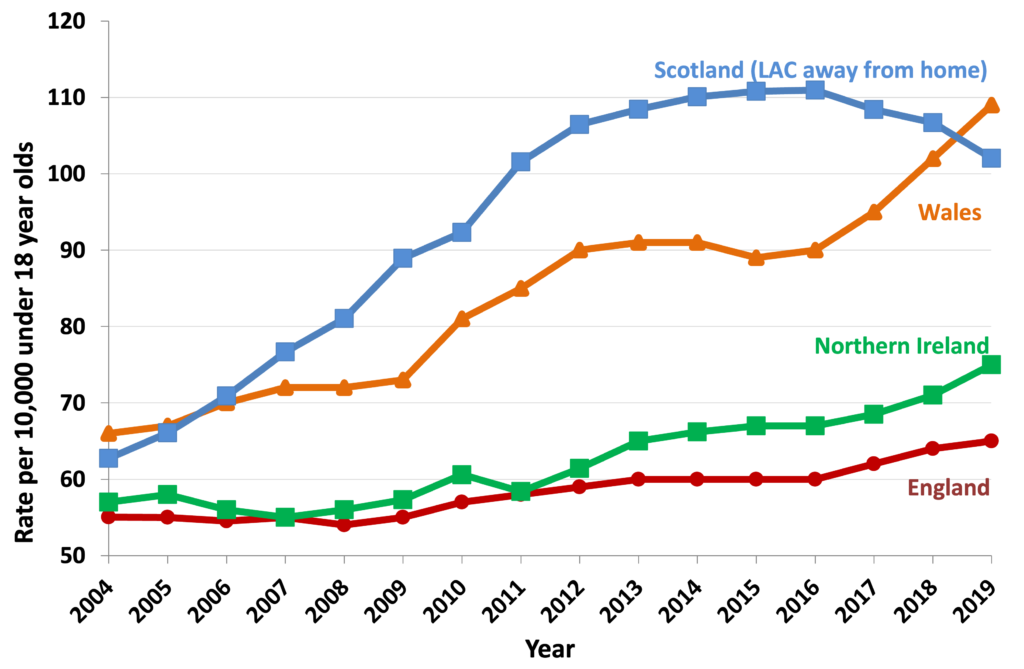In January 2022, 3,566 children in Northern Ireland were recorded as being in care, which is the highest recorded figure since 1995, according to Department of Health statistics which have been trending upwards for more than a decade.

On 21 January 2022, the Northern Ireland Health Minister, Robin Swann, announced a review of children’s social care services in Northern Ireland. The accompanying Department of Health press release and documentation claimed: “Northern Ireland has the highest number of children in care since the introduction of the Children Order in 1995…”
This fact check examines the current figures relating to children in care in Northern Ireland, and compares these to previous figures for Northern Ireland as well as other jurisdictions of the UK and Ireland.
What is a “child in care”?
A child is considered “in care” or “looked after” if a health trust places a child in its care or has been provided with accommodation for a continuous period of more than 24 hours in the exercise of a trust’s social service function.
How many children are in care in Northern Ireland?
The Department of Health collects data on the number of children who are placed in care in Northern Ireland.
Figure 1. Children in Care in Northern Ireland at 31 March (1995–2021)

The chart above shows that in 1995, there were 2,624 children recorded as being in care. This figure declined to 2,324 children in 1999, but has been increasing regularly since then. As of 3 January 2022, 3,566 children were residing in care in Northern Ireland, a 6.1% increase from pre-COVID-19 statistics (3,362 children in care on 30 September 2019). The increase since the start of the pandemic was noted by the Health Minister.
How does this figure compare to other jurisdictions?
Figure 2. Cross-UK comparison of rate of looked after children per 10,000 children, 2004–2019

In the UK updated statistics are available for England, Northern Ireland, Scotland, and Wales. Caution is needed, as the definition of “looked after children” varies across the jurisdictions. With this consideration, an interesting comparison is to examine rates of children in care per 10,000 of under 18-year-olds, shown in the above figure. (The compilation and calculation of rates was done by the Government of Scotland, for data up through 2019; we did not apply this for more recent data.)
The data suggest that there was an upward trend in Wales (109 per 10,000), Northern Ireland (75), and England (65) between 2016 and 2019. Scotland’s rate — previously the highest — was declining (102 per 10,000).
Table 1. Children in Care in Ireland at 31 December (2014–2021)
| 2014 | 2015 | 2016 | 2017 | 2018 | 2019 | 2020 | 2021 |
| 6,454 | 6,384 | 6,267 | 6,196 | 6,041 | 5,985 | 5,882 | 6,000 |
In Ireland, Tusla is the child and family agency responsible for improving wellbeing and outcomes for children. Statistics in its annual reports suggest a trend of decreasing figures, from 6,463 children in care in 2014 to 5,882 in 2020. It is estimated there are 6,000 children in care in the Republic of Ireland at the end of December 2021.
Summary
The Department of Health collects regular data on the number of children in care in Northern Ireland. According to its January 2022 bulletin, there were 3,566 children in care, which is the highest recorded figure since 1995.
The Government of Scotland compiled figures across the UK jurisdictions, showing that the rate of children in care per 10,000 children is highest in Wales and Scotland, and lower in Northern Ireland and England.
Figures for Ireland suggest a generally decreasing trend of children in care, though with an increase from 2020 to 2021.




